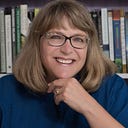

Discover more from The Cottage
I stood on the hill and looked out over the wide river. A stronger than expected breeze blew the brown beanie from my head and I chased it across the lawn. The old plantation house rose behind me, and my Girl Scout troop leader called me back to the group.
“That’s the Potomac River, girls,” our guide said. “Perhaps this is exactly where George Washington was when he tossed a silver dollar across to the other side.”
The water sparkled in the spring sunshine. What a big river! How could anyone throw a coin to the opposite shore? George Washington, father of our country and first president, must have possessed supernatural strength. Like Superman?
The vista, and the thought of him having lived right here, filled me with a sense of awe.
Although the memory is as clear as if it happened yesterday, it was probably fifty-five or so years ago. It was a long bus trip from Baltimore to Mount Vernon, the route my Methodist church Brownie troop had taken. My mother had starched my uniform so it would stay neat all day. We boarded the school bus early in the morning at the church parking lot, all fresh pressed to visit the first president’s house. Mostly, the dress scratched me while sitting on the vinyl bus seat.
But what an adventure for a eight year old!
I was fortunate enough to be born in Maryland and grow up in the Mid-Atlantic, a place filled with history — and the landscape of endless school, church, and scout field trips. The world was a-jumble with lessons about the Founding Fathers, Jesus and John Wesley, and Betsy Ross and the Virgin Mary. I’m quite certain that, unlike the Catholic children who went to the church across the street from ours, I knew of Francis Scott Key before I ever heard of St. Francis.
Through some strange twists of fate, I wound up living in Mount Vernon. The house we bought more than twenty years ago sits on a piece of property once owned by George Washington, on the far edges of his Mount Vernon estate. The houses in the neighborhoods around us — mostly built from 1950 to 1980 — are similar in size and style. We’re the post-war suburban sprawl of northern Virginia, built on hunting lands where Pocahontas’ tribe once roamed, and where English squires built massive estates. Well, they didn’t build them. They had the people they held in slavery do the actual building.
I think about those people all the time — the Powhatan, those settlers and colonists, and those enslaved.
And now, on the occasional day when I’m at the Mount Vernon estate, I stand in the exact location where I stood as a girl. I look out over the river, the same flowing, wide river — waters that have made their way down from the Appalachians to the ocean as they have for thousands and thousands of years. And I reconsider history.
I still like George Washington in many ways — the president who could have been king but humbly turned over power with optimistic hope for America’s young democracy. But I hate that he owned other humans, and I hate that he married a wealthy widow — after his heart was broken by his true love, Sally Fairfax — who brought to their union some three hundred people in bondage as a dowry.
He didn’t throw a silver dollar across the river; he didn’t cut down a cherry tree. Parson Weems, an evangelical minister, made up most of those stories to lend a divine status to Washington in the first biography written about the first president. Parson Weems turned George into an American St. George. The parson was so good at creating saints, he even added a scene of General Washington praying at Valley Forge for victory against the British — and included miracles in his narrative. Evangelical ministers have been very good at inventing a Christian America for a very long time.
But George wasn’t Superman. And he wasn’t a saint. Not even close. A man of his time. Many flaws, deep contradictions, complicit with all sorts of injustice. On the plus side of the moral ledger, even if the cherry tree thing wasn’t true, he kept his word. After his death, Martha freed George’s slaves as he wished (she was, however, worried that if she didn’t they would revolt). There are people who still live in my neighborhood who are descendants from those freed long ago.
I get mad at Parson Weems. He so wanted to prove that the United States was providentially guided and part of God’s plan, that he scripted Washington into a saint. For generations, Americans believed his hagiography. Until most of us didn’t. Most of us, that is. Some believe it still, I fear.
When I think about the making of saints, about the stories we tell of the past, about those who inspire us, I always wonder: Why can’t we just be honest? Why can’t we say that people like Washington, as worthy and brave that they were in some circumstances, acted with malice in order to enrich themselves — even when they knew they were wrong?
History is not hagiography. Honoring our ancestors doesn’t make them without sin. A saint needn’t be “saintly” to be a guide who points the way toward a better world or a model to inspire a better life. Sometimes “saints” need to show us the mistakes we shouldn’t make again.
When I stand on the hill, I remember the world of that eight-year-old girl. I think of how I understand George now. He doesn’t inspire awe. But he does remind me how awful we humans can be, even as we do some truly great things with our wounded lives. We should try to avoid that. We can do better. And I think of those who also stood here, those held in bondage, looking out over the water, believing, as the enslaved did, that they were “born on the water” as they longed to cross that very water to freedom.
George, you make me cry now. How could you? And how could my Girl Scout troop leader lie about you? The first generation of citizens of the new Republic dispensed with kings and invented mythical men without sin. They put you on pedestals higher than kings — they made you untouchable as the gods.
I wish they’d just told the truth.
Don’t hide history. It always comes out. You have to work really hard to keep truth silent.
Mount Vernon is beautiful. And Mount Vernon is full of pain. Just like America. And the river of history keeps flowing by, from the high places all the way down to the sea.
What sort of saints do we need? Not the kind of Parson Weems. We need wise river guides. There’s rough waters to navigate ahead.
What saints have disappointed you? How have the stories of your heroes changed over time? What sort of “saints” are most needed now? Who would you trust as a guide on the “river of history”?
INSPIRATION
I wonder what I would have said
if my dad asked me,
"Son, do you know who cut down
my pretty cherry tree?"
I think I might have closed my eyes
and thought a little bit
about the herds of elephants
I'd seen attacking it.
I would have heard the rat-a-tat
of woodpeckers, at least,
or the raging roar of a charging boar
or some such other beast!
Perhaps a hippopotamus
with nothing else to do
had wandered through our garden
and stopped to take a chew.
We all know George said,
"Father, I cannot tell a lie."
Yet I can't help but wonder ...
Did he really try?
— Bobbi Katz, “George Washington’s Birthday: Wondering”
MARCH 16: THIRD THURSDAY COTTAGE ZOOM
Preaching John 11 this Lent — with Elizabeth Schrader LIVE
8PM Eastern; 5PM Pacific
Elizabeth “Libbie” Schrader (soon to be “Dr. Schrader”) of Mary Magdalene fame will be back at the Cottage for a very specific reason. On the upcoming Fifth Sunday in Lent (March 26), the lectionary gospel text will be John 11 — this is the chapter by which she’s shaking up the world of Johannine studies with her discovery of textual errors suggesting that Mary Magdalene is the only women in the story and Lazarus’ only sister.
Many of you know Libbie’s work through the sermon I shared last summer at Wild Goose — or through her visit to the Cottage in October 2021.
ON THURSDAY NIGHT MARCH 16, Libbie and I will be talking LIVE — with an open Q&A — about how to preach John 11 in light of these new discoveries! If you’re a preacher who wants to incorporate her research into your sermon, this session is for you!
But non-preachers — don’t worry! It will be a great session if you teach adult ed classes, want to share the best in biblical scholarship with your friends or a book group, or just want to be aware of her edge-cutting research for your own spiritual curiosity.
THE LINK WILL BE SENT OUT TO ALL PAID SUBSCRIBERS ON THURSDAY.But I wanted you to put it on your calendar now: THURSDAY MARCH 16 at 8PM EASTERN.
If you can’t make the live session, a recording will be sent out to all paid subscribers within 24 hours after the event.
Subscribe to The Cottage
Part retreat, part think tank. A place for inspiration and ideas about culture, faith, and spirit.




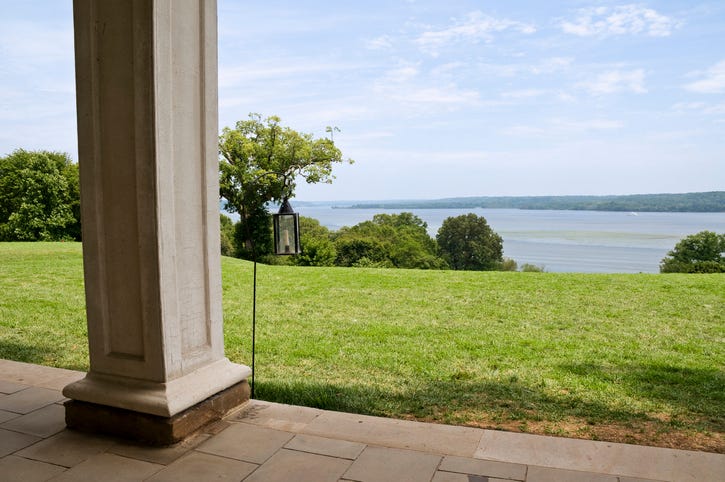





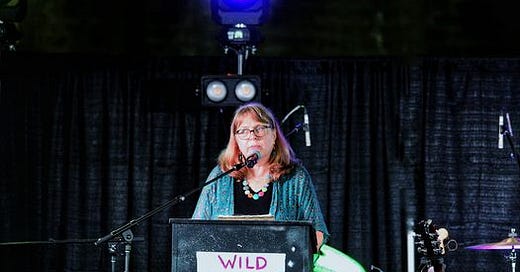

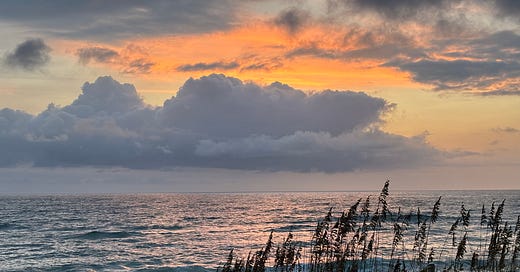

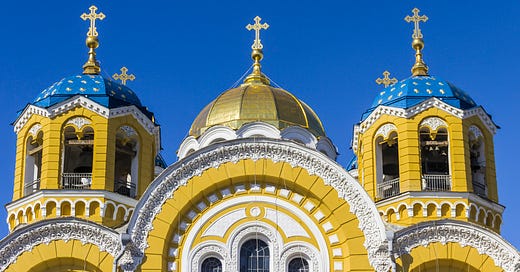

John D was his name. He was the minister who mentored me to become a Christian Educator. He was up on that pedestal, and I will always be grateful for his guidance. I was working in a church in Sandston, VA when in Little Rock High a young black girl integrated a all white school.
My ideal fell from his pestle because he told me that segregation was God’s will. Not telling such stories is why history is repeating itself.
I appreciated your story Diana
I highly recommend "The Indian World of George Washington" by Colin Calloway. It will dispel any vestigial romance that clings to his memory. This beautiful post arrived as I am transcribing the horrific colonial slave codes of SC. I'm a 16th generation southerner and have spent a life time undoing everything I was taught. I'm so grateful not to be passing those lies on to my children.